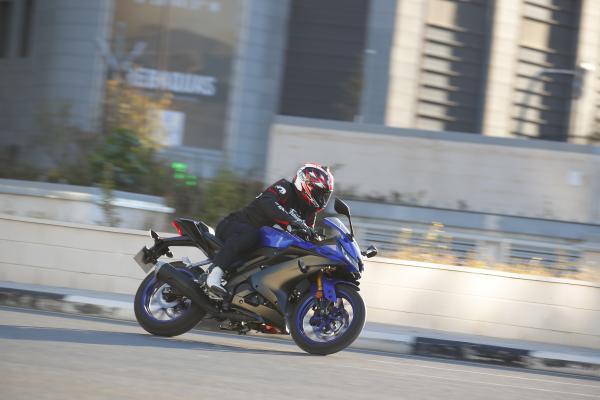Yamaha YZF-R125 (2019) review
Does variable valve timing gives Yamaha’s learner bike the edge? Our man Al went to the press launch to find out.

Member for
54 years 8 monthsIT MUST be a bit disheartening being the designer of a 125cc learner-legal engine. You’re limited on what power you can make – 11kW or 15bhp – so one of the usual aims of a powerplant designer is rendered moot. All you’ve got left is to eke out another 15mpg of fuel consumption, or some such dull job.
But the guys at Yamaha clearly weren’t having that. So for 2019, they’ve only gone and given their flagship learner lump a variable valve timing setup – the first we can think of on a 125 (the various two-stroke powervalves of ye olden days aside). Yep – the little single-cylinder powerplant has a proper variable setup in its head, with two cam profiles, one high-speed and one low-speed. An ECU-controlled solenoid locks together a two-part rocker arm at 7,400rpm, moving the valves from the low-speed cam to the high speed chappie. That means they can use a softer cam at low revs, giving torquey, efficient grunt up to 7,400rpm, then switch in a more radical high-lift cam, to provide a top-end boost.
Clever stuff – and we’re here in a chilly Valencia to try it out, on road and track. We kick off the 125 test at the track – Circuit de la Ribera outside the city. We’re also here to try the new 321cc R3, and jump off the (comparatively) fire-breathing twins onto the little singles for a couple of 20 minute sessions. The Ribera track is a very serious go-kart track, and is quite a decent size – the lap is 2.2km long, with a 400m main straight, and is fairly wide too. The R3 didn’t feel out of place at all – how would the 125 feel?
Well first thing to say is there was almost zero testing of the new VVA variable valve actuation system on track. We were out with other Euro journos on the R3s, and letting the revs dip below 8k on the 125 would have been borderline dangerous. Plus, of course, you want to try and give the R3 riders a trouncing if possible. So, it was feverish gearchanges and frantic bouncing off the redline all round the midi-racetrack, and little or no concern about the sub-7,400rpm performance.
Despite my best efforts, there was still plenty of time to look about on the main straight, and take in the rest of the new R125. Yamaha’s given several other bits of the bike a moderate makeover too – new, more aerodynamic bodywork, LED lighting, uprated suspension, new swingarm, and the new LCD dash.
Back into the twisty bits, and the 125 could just about match the bigger R3 through the bends. The Pilot Street rubber give less feedback than the R3’s Dunlops, but they still work well for a budget commuting hoop, and decking out pegs, stand and pipe was easy. The brakes are strong – but you’re doing your best not to use them at all, just changing down a gear at the end of the main straight and tipping into the fast left-hander. Meanwhile the new swingarm and quality suspension definitely gives a big-bike feel to the mini sportster.















